Coin Values Moving with Precious Metals: Up-Dated 4/14/2025: Gold $3226 | Silver $31.88
1928 Penny Value
There are special steps needed to 1928 penny value. Combining: Date | Mint Marks | Condition locates value on the chart.
Mint Marks: Small letters were used as part of the design identifying branch mints. Important to value. Refer to the images to correctly identify variety of coin.
Values range across the chart according to condition. Grading condition is detailed with images and descriptions. Matching your coin helps judge grade and place on the chart.
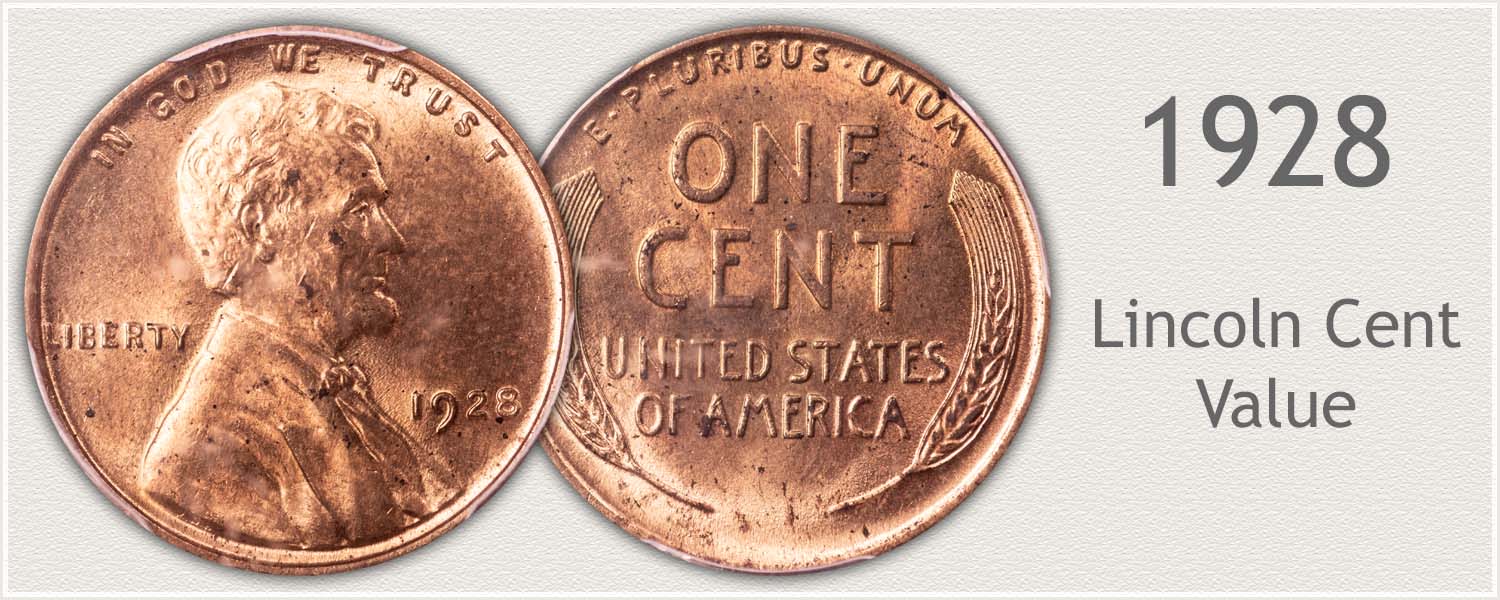
Steps Leading to Value:
- Step 1: Date and Mintmark Variety – Identify each date and its mintmark variety.
- Step 2: Grading Condition – Judge condition to determine grade.
- Step 3: Special Qualities – Certain elements either enhance or detract from value. Bold and weak strikes are reviewed.
| 1928 Lincoln Penny Value | ||||
|---|---|---|---|---|
| Condition of Coin | ||||
| Date | Good | Fine | Extremely Fine | Uncirculated |
| 1928 Lincoln Penny Value Up-Dated | 2025 | |||
| 1928 | $0.14 | $0.60 | $1.66 | $6 |
| 1928 D | $0.63 | $1.28 | $5.16 | $29 |
| 1928 S | $0.64 | $1.50 | $9.25 | $52 |
Three main areas of the coin are important to identify. Moving through these steps in order arrives at an accurate value.
Date | Mint Mark | Condition
Both collectors and dealers evaluate coins following this process.
Of these steps, judging condition stands out as important to 1928 pennies. In the grading section below, images of different grades are used to find a close match to your coin. Descriptions further refine the subtle points to condition.
Step 1: | Date and Mintmark Combination
Value in Mintmarks Defines 1923 Penny Value
Three varieties of wheat cents were struck in 1928. Branch mint pennies (those with mintmarks) are worth noting. Denver and San Francisco mints produced far fewer cents than Philadelphia.
1928 Lincoln Penny
No Mintmark Under Date: Philadelphia Mint Struck the Coin
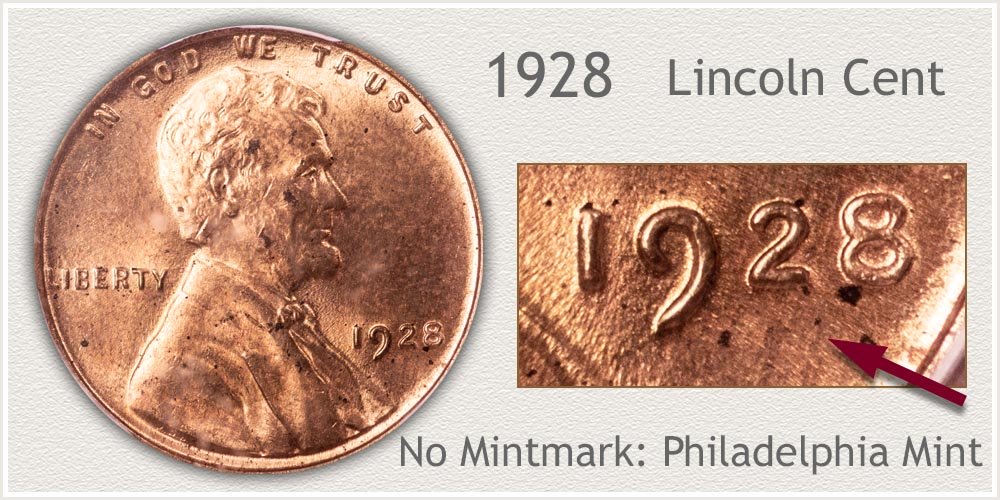
On a rarity scale 1928 Philadelphia cents are rated: Abundant. 134,116,000 were struck. Initial large supply has lessened over time due to usage of these coins in commerce. Popularity of the wheat series keeps demand strong for these early era (1909 to 1933) pennies.
Condition is the leading factor to value. Average become above average if Lincoln's portrait is sharply detailed. Hair with a clear separation from forehead is indicating a desirable coin.
1928-D Lincoln Penny
"D" Mintmark Under Date: Denver Mint Struck the Coin
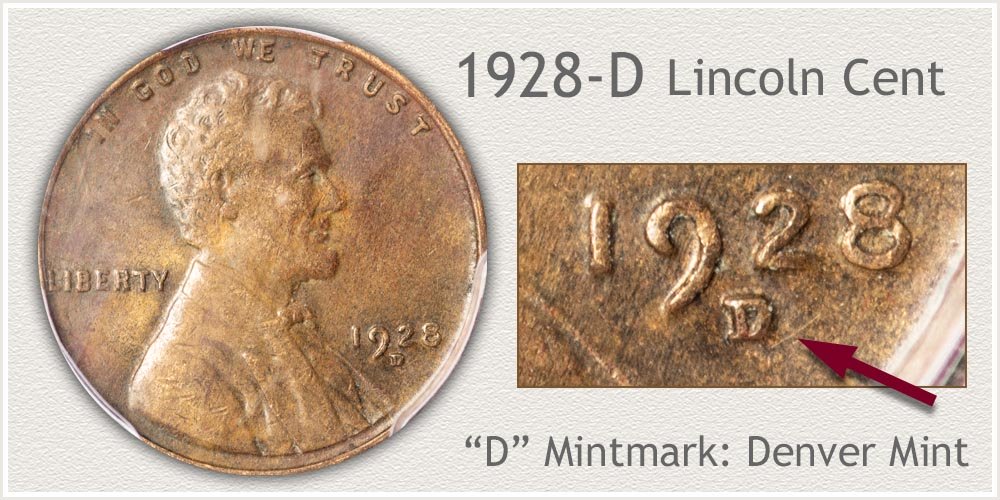
Majority of Denver 1928 cents remained in circulation for an extended time. Heavy wear is typical of those encountered today. Collectors are still interested in these coins, however seek examples in well detailed condition. Base value of circulated coins is supported by young and beginning collectors, and these represent an affordable choice.
Inspect the reverse of your coin, if the wheat stalks display grains within the stalks and fine separated lines towards the ends, above average condition is indicated. Demand for higher grades coins raises value quickly. Note on the chart Fine grade verses Extremely Fine grade.
1928-S Lincoln Penny
"S" Mintmark Under Date: San Francisco Mint Struck the Coin
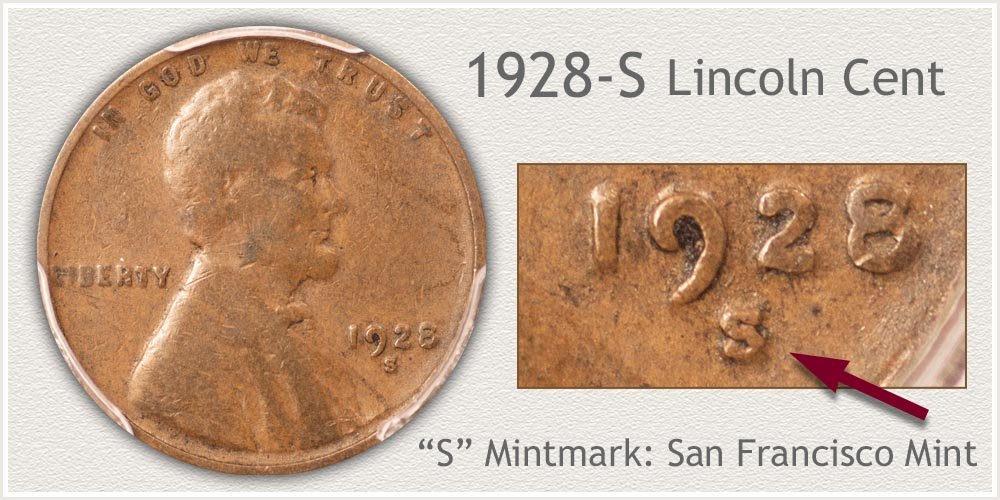
Of the three 1928 varieties San Francisco pennies are least available. Collections of wheat cents include all dates and mints for each year. As a collection grows improving the condition of coins in the sets puts added demand on nice eye appealing coins. These have become the semi-key for the year.
High grade 1928-S cents are elusive. One factor is sharpness of detail remaining. A coin displaying a lack of marks and even soft brown toning is also a deciding element to many collectors. Values of these pleasing coins is noted on the chart separating a Fine grade coin from an Extremely Fine grade.
Step 2: | Judge Condition to Identify Grade
Examine Condition of 1928 Penny
Grade is a definition used by collectors when describing the condition of a coin. Grades listed on the chart range from Good (heavily worn penny) to Uncirculated (no wear). Specific areas are inspected to judge condition.
Best approach to grading is studying the image of an uncirculated coin first. Identifying the depth of the design, knowing the high and low areas, helps in determining degrees of wear.
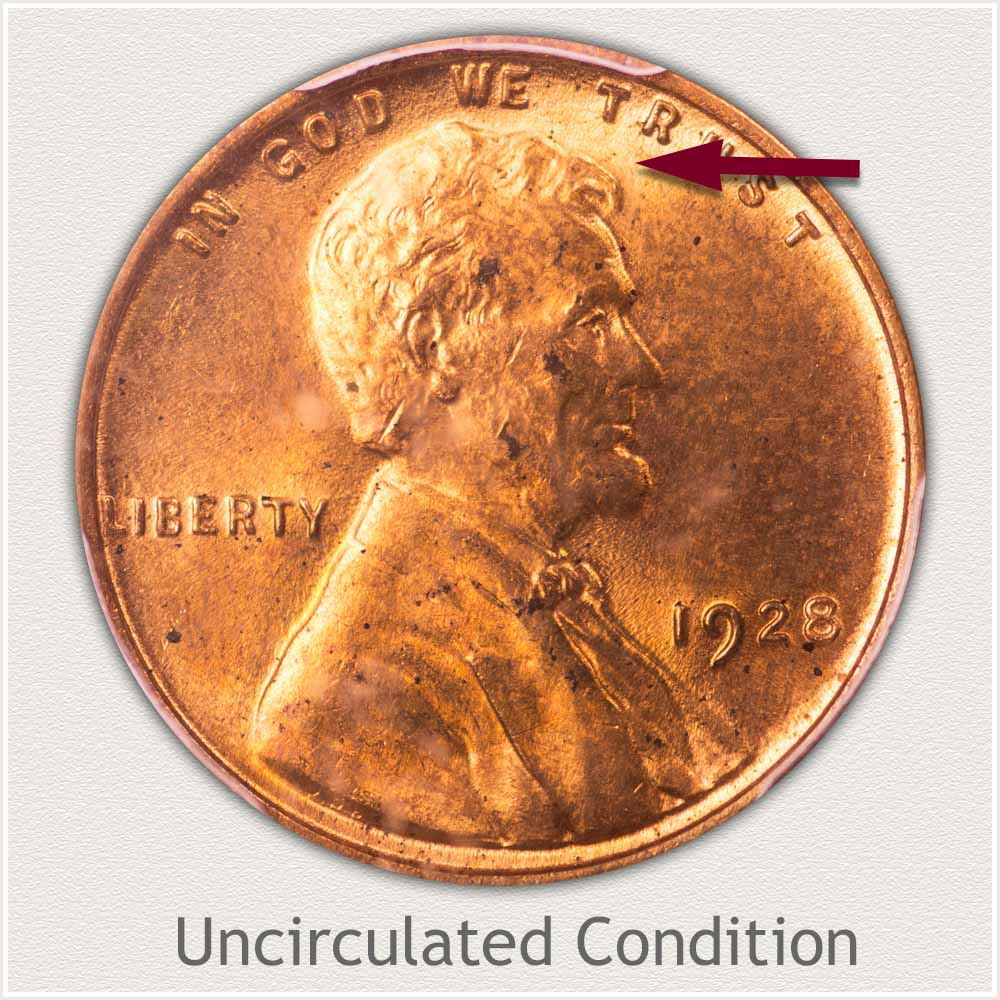
Uncirculated Grade: Mint state - uncirculated grade is a coin without any wear to the surface. A 1928 penny in this top tier condition is highly valued and sought by collectors. An inspection of all raised points is needed to confirm the grade.
Starting at the top of the design, Lincoln's hair is well raised above the field of the coin. Any circulation wear tends to show over the waves of hair as a series of flat spots. When minted a fine texture is imparted to the metal giving a newly minted coin its luster. Wear removes this luster quickly and dulls the shine.
When judging the aesthetics of a mint state coin, even color and lack of spots adds to eye appeal. Unmarred surfaces are a premium example and very collectible.
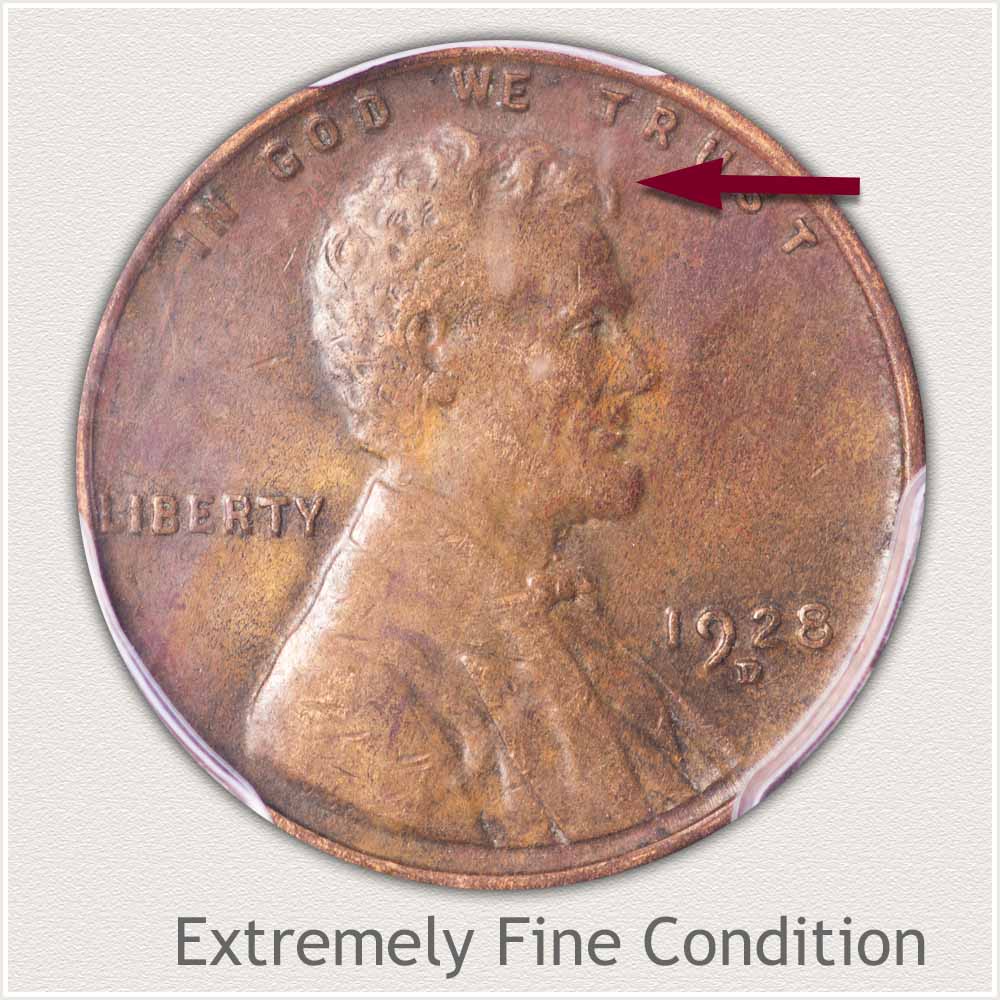
Extremely Fine Grade: Wear is just beginning to show over the entire coin. Light wear is the key to a coin considered Extremely Fine grade.
All major design features remain bold, Lincoln's ear, bow tie, and lines to his coat. Inspect the hair, minor wear is noted with all waves separated. Areas of flatness are confined to the very upper edges of contours leaving waves of hair bold.
A lack of noticeable contact marks to the fields and rim adds to strengthening the appeal. Open flat areas forming the background are prone to showing marks. The example 1928-D penny is notable as having well preserved surfaces.
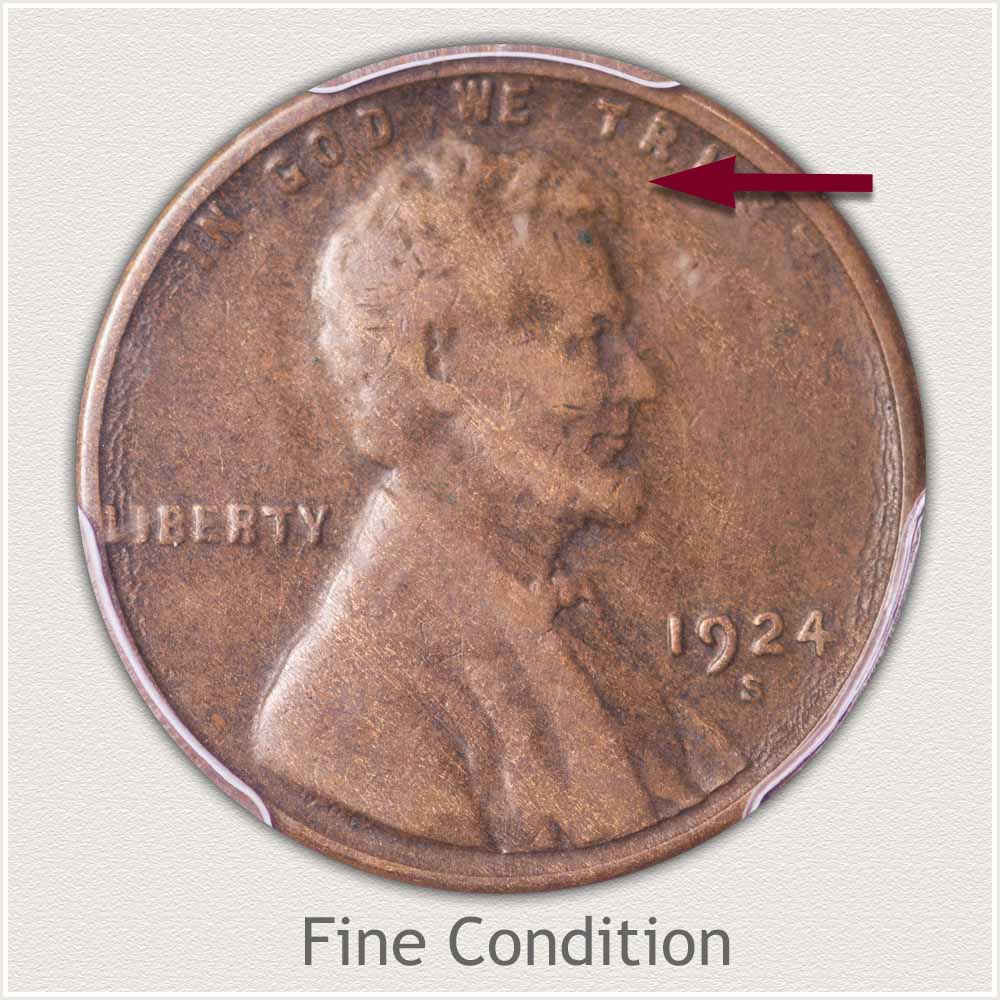
Fine Grade: Moderate wear towards the rim with heavier wear within the central area is judged a wheat cent in Fine grade.
Waves of hair over Lincoln's forehead have lost most of the finer detail. Flatness has reduced the contours to the waves. A clear separation of his hair from the forehead places the coin solidly in the fine grade.
A nice balance of color is portrayed by the example. Natural copper toning of light and darker browns highlights remaining detail. An eye appealing wheat cent in circulated grade is sought by collectors.
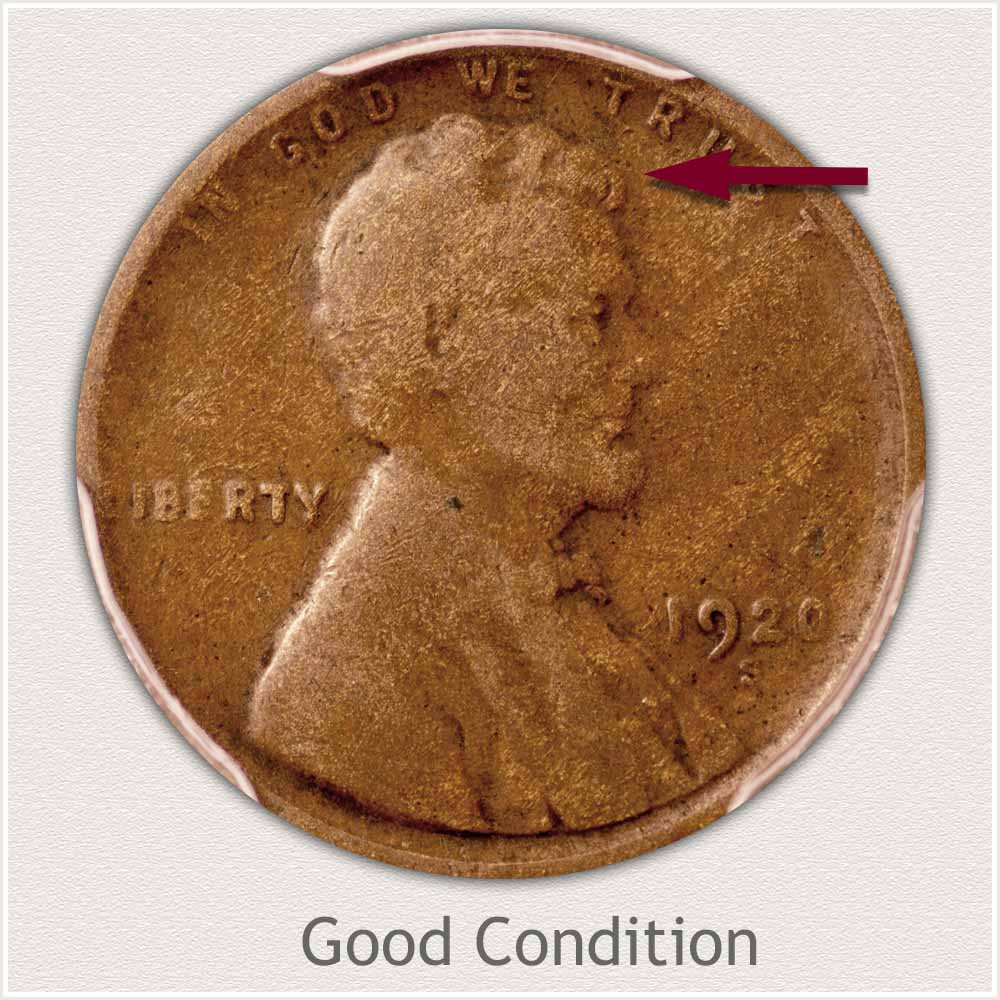
Good Grade: Extensive wear, creating large areas of flatness, is graded Good condition. Within the central area, all contours of Lincoln's face are worn to one smooth surface.
Hair at the top of Lincoln's head is mostly flat. Minor waves of hair have merged leaving only major details separated.
Once a coin becomes heavily worn, the number of recognizable features standing out adds to value. Legends separated from the rim is a plus. A bold date is important. A technical grade of Good combined with pleasing eye appeal is strong for the grade.
Video | Grading Lincoln Wheat Pennies
Place higher grade coins in individual holders. Small zip lock bags are a good temporary solution. For higher value coins, Grading Lincoln Wheat Pennies expands on the grading process with video, descriptions, and images.
Step 3: | Special Qualities Enhancing Value
Crisp Details of a 1928-D Penny
Without a doubt the "S" mint mark - San Francisco variety receives the publicity of 1928 pennies. Considered the semi-key for the year it enjoys a strong premium, especially in higher grades.
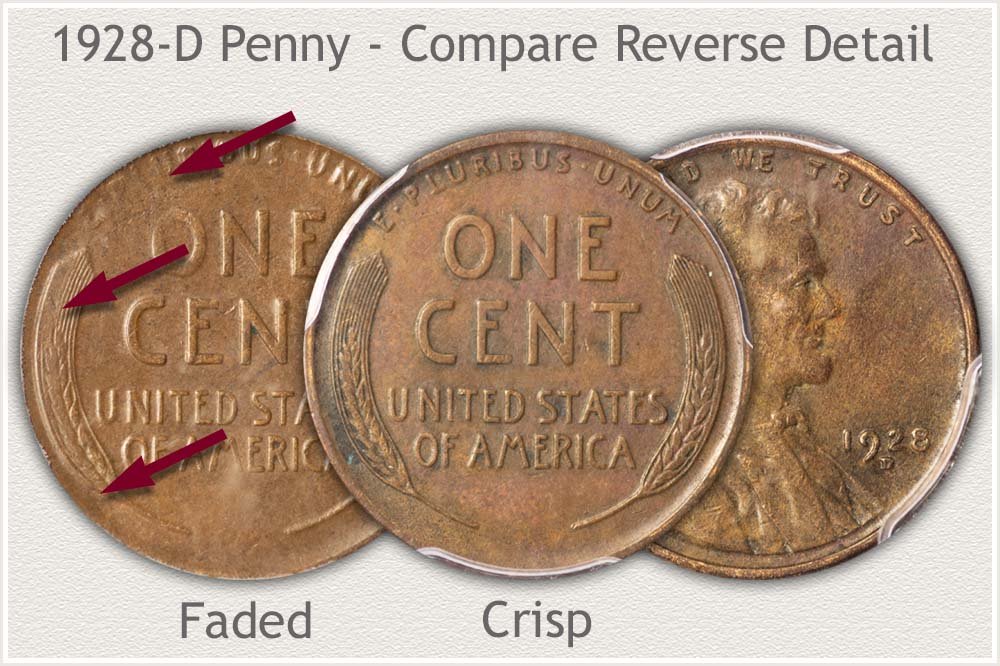
Somewhat overshadowed the "D" mint mark - 1928 Denver variety is quietly difficult to find in higher grades. With less attention, premiums are moderate. Both however are in demand to complete date and mint mark collections of wheat pennies.
Compare the reverse detail of the two pennies. An astute eye detects a difference. Both are just slightly worn and condition is Extremely Fine, an elusive grade for a 1928-D penny. A collector seeking top quality notices one reverse displays weakness of the lettering along the rim an indistinct rim and faded lines in the wheat stalk.
Eye appeal because of crisp detail places one ahead of the other in desirability to collectors. A search for quality among Denver pennies adds to the challenge of finding the right coin. Consider all with well-defined details solid for the grade and value. As premiums rise subtleties gain importance.
ReferencesUS Mint. 1929 US Mint Annual Report https://nnp.wustl.edu/library/publisherdetail/51
Coin Values | CoinStudy Articles
Lincoln Wheat cents span the years 1909 through 1958. From the top condition coins collected by advanced collectors to worn examples; to an affordable collection for young collectors, the range of value is extensive. Identify your date, mint and condition and refer to the value chart.
Coin Value Guide | How to Value a Coin Collection
A step by step method combined with the coin value online guide identifies how to value a coin collection. Discover how much your box of old coins is worth.
★ Coin Values Discovery finds 1928 Penny Value and...
All US coin values. Recognize your old coins using the image links leading to value charts. Date | Mintmark | Condition are considered; all described and imaged within each series. Surprising value is often found in the smallest of detail.